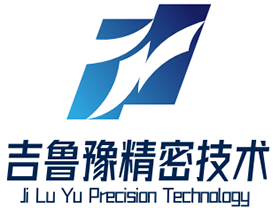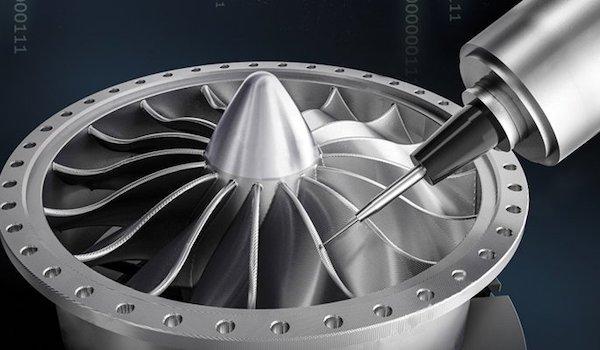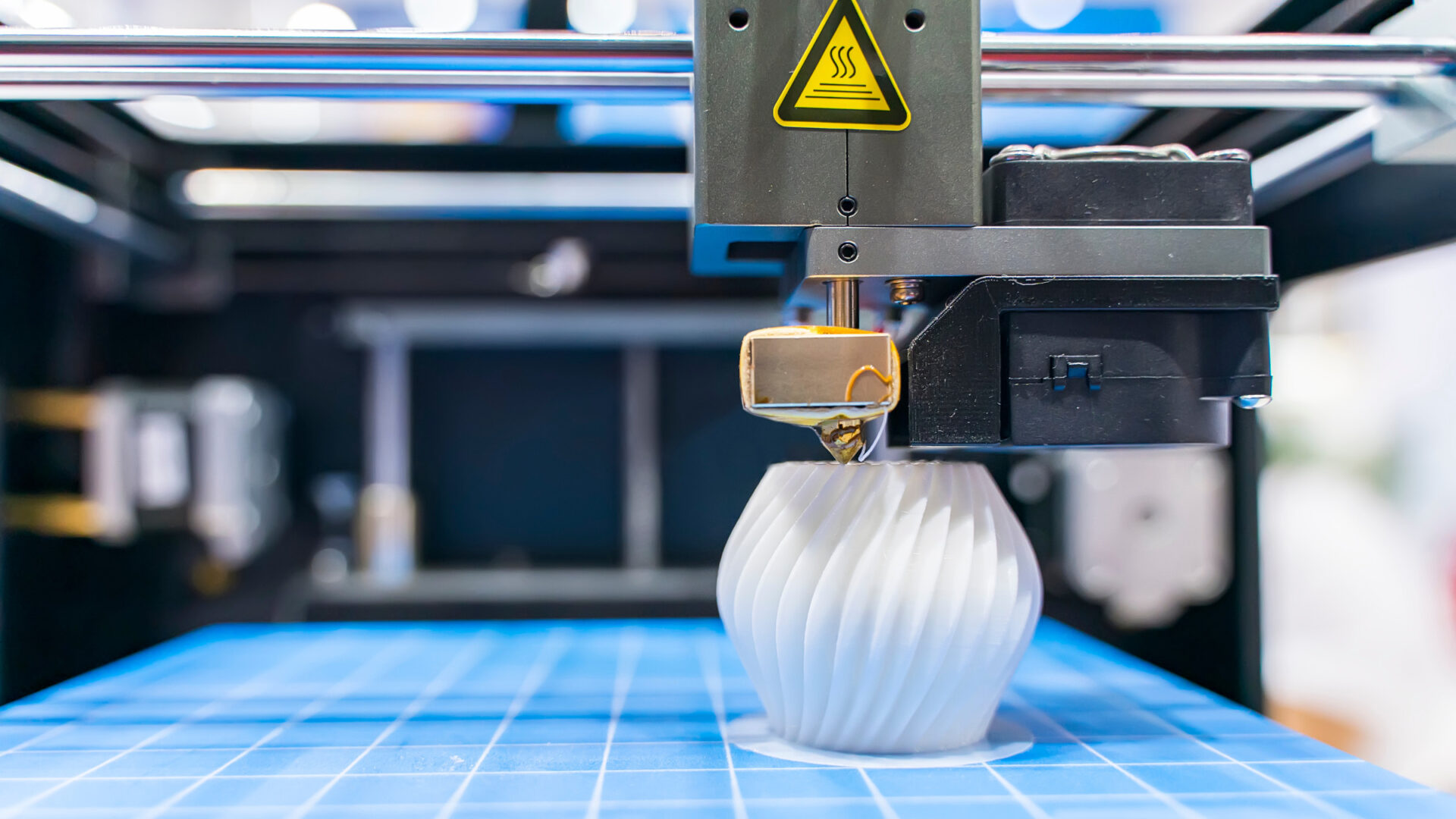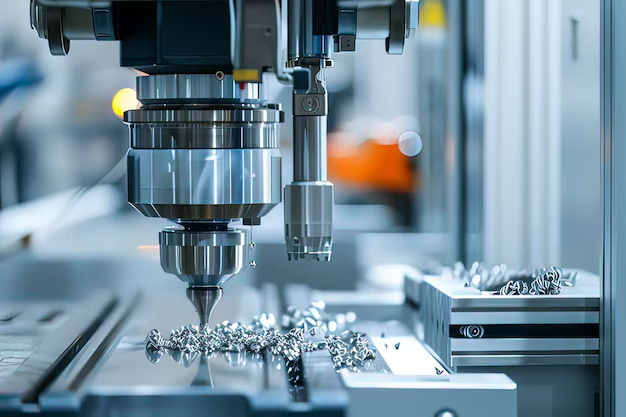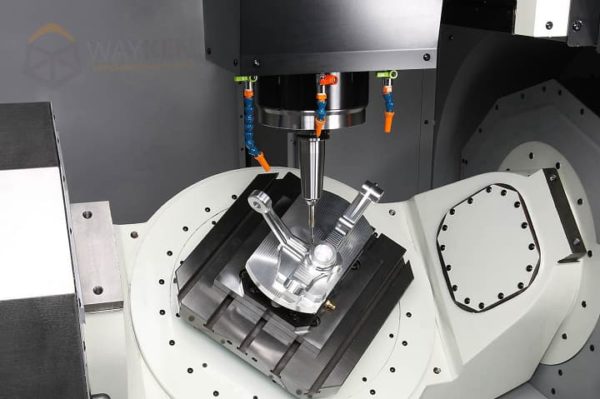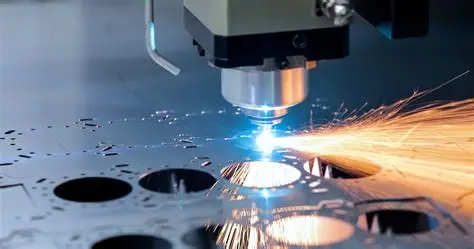High Precision CNC Machining for Aluminum 7075 Aerospace Parts: Mastering Critical Component Manufacturing
The aerospace industry’s relentless pursuit of performance, efficiency, and reliability has established aluminum 7075 as a cornerstone material for critical aircraft components. The exceptional strength-to-weight ratio and mechanical properties of this alloy demand equally exceptional manufacturing capabilities. High precision CNC machining for aluminum 7075 aerospace parts represents a specialized discipline that combines advanced manufacturing technologies with metallurgical expertise to produce components that meet the rigorous standards of modern aviation.
Aluminum 7075 in Aerospace Applications: Material Properties and Advantages
Aluminum 7075, particularly in the T6 temper condition, has become the gold standard for high-stress aerospace components due to its exceptional mechanical properties and favorable strength-to-density ratio. Understanding these material characteristics is fundamental to implementing effective high precision CNC machining for aluminum 7075 aerospace parts.
Metallurgical Properties of Aluminum 7075-T6
The superior performance of aluminum 7075 in aerospace applications stems from its specific metallurgical composition and heat treatment:
Chemical Composition
-
Zinc (5.1-6.1%): Primary strengthening element through precipitation hardening
-
Magnesium (2.1-2.9%): Enhances strength and stress corrosion resistance
-
Copper (1.2-2.0%): Improves strength and precipitation hardening response
-
Chromium (0.18-0.28%): Controls grain structure and improves toughness
Mechanical Properties
-
Tensile Strength: 74-78 ksi (510-538 MPa)
-
Yield Strength: 63-69 ksi (434-476 MPa)
-
Elongation: 7-11% in 2 inches
-
Fatigue Strength: 23 ksi (159 MPa) at 500 million cycles
-
Shear Strength: 48 ksi (331 MPa)
Aerospace Applications of Aluminum 7075 Components
The specific properties of aluminum 7075 make it ideal for numerous critical aerospace applications requiring high precision CNC machining for aluminum 7075 aerospace parts:
Structural Airframe Components
-
Wing spars and ribs requiring high stiffness and fatigue resistance
-
Fuselage frames and bulkheads for structural integrity
-
Landing gear components subjected to high impact loads
-
Control surface actuators and mounting structures
Aircraft System Components
-
Engine mounts and support structures
-
Flight control system linkages and brackets
-
Hydraulic system components and manifold blocks
-
Avionics mounting racks and enclosures
*Table: Aluminum 7075-T6 vs. Other Aerospace Aluminum Alloys*
| Property | 7075-T6 | 6061-T6 | 2024-T3 | 5052-H32 |
|---|---|---|---|---|
| Tensile Strength (MPa) | 510-538 | 310 | 469 | 228 |
| Yield Strength (MPa) | 434-476 | 276 | 324 | 193 |
| Elongation (%) | 7-11 | 12-17 | 10-20 | 10-18 |
| Fatigue Strength (MPa) | 159 | 96 | 138 | 117 |
| Density (g/cm³) | 2.81 | 2.70 | 2.78 | 2.68 |
| Typical Aerospace Use | Primary structure | Secondary structure | Primary structure | Non-structural |
Technical Challenges in High Precision CNC Machining for Aluminum 7075 Aerospace Parts
While aluminum 7075 offers exceptional mechanical properties, these same characteristics present unique challenges that must be addressed through specialized high precision CNC machining for aluminum 7075 aerospace parts methodologies.
Material-Specific Machining Considerations
Work Hardening and Surface Integrity
The high strength and precipitation-hardened structure of aluminum 7075 requires specific approaches in high precision CNC machining for aluminum 7075 aerospace parts:
-
Maintain consistent chip load to prevent work hardening of machined surfaces
-
Utilize sharp cutting tools with positive rake angles to minimize cutting forces
-
Implement high-pressure coolant to control cutting temperatures and prevent material adhesion
-
Avoid tool dwell situations that can cause localized hardening
Stress Corrosion Cracking Susceptibility
Aluminum 7075 exhibits sensitivity to stress corrosion cracking in certain orientations, necessitating:
-
Strategic fixturing to minimize residual stresses during machining
-
Proper sequence planning to distribute machining stresses evenly
-
Stress relief operations for complex components with significant material removal
-
Controlled machining parameters to prevent excessive thermal gradients
Precision and Tolerance Requirements
Aerospace components demand exceptional dimensional stability and precision, making high precision CNC machining for aluminum 7075 aerospace parts particularly challenging:
Geometric Dimensioning and Tolerancing
-
Positional tolerances typically within ±0.025mm for critical features
-
True position requirements often exceeding 0.05mm for mating surfaces
-
Surface finish requirements ranging from 0.8-3.2 μm Ra for different applications
-
Angular tolerances within ±0.1° for aerodynamic surfaces
Thermal Management During Machining
The high precision CNC machining for aluminum 7075 aerospace parts process must account for:
-
Thermal expansion effects on dimensional accuracy
-
Consistent coolant temperature maintenance for process stability
-
In-process measurement compensation for temperature variations
-
Post-machining stabilization before final inspection
Advanced Machining Strategies for Aluminum 7075 Aerospace Components
Successful high precision CNC machining for aluminum 7075 aerospace parts requires implementation of sophisticated machining strategies tailored to the material’s specific characteristics.
Tooling Selection and Optimization
Cutting Tool Materials and Geometries
The selection of appropriate tooling is critical in high precision CNC machining for aluminum 7075 aerospace parts:
Carbide Tool Selection
-
Micrograin carbide substrates for edge strength and wear resistance
-
Specialized coating systems including AlTiN and TiAlN for thermal protection
-
Polished flute surfaces to prevent aluminum adhesion and built-up edge
-
Variable helix designs for vibration damping in extended tools
Tool Geometry Optimization
-
High positive rake angles (10-15°) for free-cutting action
-
Large clearance angles (7-12°) to prevent rubbing and work hardening
-
Specialized chipbreaker designs for effective chip control
-
Reduced neck lengths where possible to maximize rigidity
Machining Parameter Optimization
High-Speed Machining Parameters
Advanced high precision CNC machining for aluminum 7075 aerospace parts utilizes optimized cutting parameters:
Roughing Operations
-
Cutting speeds: 800-1200 SFM (244-366 m/min)
-
Feed rates: 0.004-0.008 inches per tooth (0.10-0.20 mm/tooth)
-
Depth of cut: Up to 1.5 × tool diameter for slotting
-
Stepover: 40-70% of tool diameter based on tool length-to-diameter ratio
Finishing Operations
-
Cutting speeds: 1200-2000 SFM (366-610 m/min)
-
Feed rates: 0.002-0.005 inches per tooth (0.05-0.13 mm/tooth)
-
Depth of cut: 0.005-0.020 inches (0.13-0.51 mm) for dimensional stability
-
Stepover: 5-15% of tool diameter for optimal surface finish
Table: Machining Parameters for High Precision CNC Machining for Aluminum 7075 Aerospace Parts
| Operation Type | Speed (SFM) | Feed (IPT) | DoC (inches) | Tool Material | Coolant Pressure (PSI) |
|---|---|---|---|---|---|
| Rough Milling | 800-1000 | 0.006-0.010 | 0.5-1.0 | Uncoated Carbide | 300-500 |
| Semi-Finishing | 1000-1400 | 0.004-0.006 | 0.1-0.3 | AlTiN Coated | 500-800 |
| High-Speed Finishing | 1500-2000 | 0.002-0.004 | 0.02-0.08 | PCD | 800-1000 |
| Drilling | 300-400 | 0.004-0.008 | Full depth | Carbide | 1000+ |
| Reaming | 100-200 | 0.002-0.004 | Full depth | Carbide | 500-700 |
Quality Assurance and Metrology for Aerospace Components
The rigorous quality standards of the aerospace industry demand comprehensive inspection methodologies in high precision CNC machining for aluminum 7075 aerospace parts.
Dimensional Verification Systems
Advanced Metrology Equipment
-
Coordinate Measuring Machines with scanning capabilities for comprehensive feature analysis
-
Laser scanning systems for complex contoured surfaces
-
Vision measurement systems for rapid 2D feature verification
-
Surface roughness testers with both contact and non-contact capabilities
First Article Inspection Requirements
The high precision CNC machining for aluminum 7075 aerospace parts process includes detailed FAIR documentation:
-
AS9102 forms completion for aerospace compliance
-
Comprehensive dimensional reports with actual measurement data
-
Material certification verifying alloy composition and heat treatment
-
Process documentation including cutting parameters and inspection methods
Non-Destructive Testing Applications
Surface and Subsurface Inspection
-
Fluorescent penetrant inspection for surface defect detection
-
Eddy current testing for near-surface flaw identification
-
Ultrasonic inspection for internal defect detection
-
X-ray fluorescence for material verification
Case Studies: High Precision CNC Machining for Aluminum 7075 Aerospace Parts Success Stories
Case Study 1: Aircraft Wing Spar Manufacturing
Challenge: An aerospace manufacturer required high precision CNC machining for aluminum 7075 aerospace parts specifically for a critical wing spar component with complex contour profiles and multiple attachment features. The 2.5-meter long component demanded positional accuracy of ±0.025mm for mounting features and surface finish of 1.6 μm Ra on aerodynamic surfaces.
High Precision CNC Machining for Aluminum 7075 Aerospace Parts Solution:
Our approach involved a multi-stage manufacturing strategy:
-
5-axis simultaneous machining using 40-taper machines with thermal stability systems
-
Custom modular fixturing to support the long, slender component during machining
-
Adaptive roughing strategies with trochoidal toolpaths to minimize cutting forces
-
High-speed finishing with PCD tooling for optimal surface integrity
-
In-process verification using laser tracking interferometry for dimensional control
Results:
-
Achieved positional accuracy of 0.018mm on critical mounting features
-
Surface finish of 1.2 μm Ra exceeded specification requirements
-
Reduced machining time by 28% through optimized toolpaths and parameters
-
Zero non-conformances during first article inspection
Case Study 2: Flight Control Actuator Bracket Production
Challenge: A defense contractor needed high precision CNC machining for aluminum 7075 aerospace parts for a complex flight control actuator bracket with thin-walled sections (1.2mm minimum) and multiple precision bearing bores. The component required bore concentricity within 0.015mm and perpendicularity within 0.01mm over 85mm length.
High Precision CNC Machining for Aluminum 7075 Aerospace Parts Solution:
Our specialized approach included:
-
Multi-operation machining with complete processing in single setup
-
Finite element analysis of fixturing to prevent thin-wall distortion
-
Bore machining using custom boring tools with micro-adjustment capabilities
-
Cryogenic machining techniques for critical features to maintain dimensional stability
-
Post-machining stress relief to ensure long-term dimensional stability
Results:
-
Achieved bore concentricity of 0.012mm and perpendicularity of 0.008mm
-
Maintained wall thickness consistency within ±0.05mm across entire component
-
99.7% first-pass yield rate on production batch of 250 components
-
Successfully passed rigorous fatigue testing at 150% of design load
Case Study 3: Satellite Structural Panel Fabrication
Challenge: A space systems manufacturer required high precision CNC machining for aluminum 7075 aerospace parts for large satellite structural panels with complex pocketing patterns and precision mounting interfaces. The 1.8m × 1.2m panels demanded flatness within 0.1mm/m and positional accuracy of ±0.038mm for component mounting features.
High Precision CNC Machining for Aluminum 7075 Aerospace Parts Solution:
Our comprehensive manufacturing strategy incorporated:
-
Large-format 5-axis machining with 4-meter bed capacity
-
Advanced workholding with vacuum chuck system for panel stability
-
Dynamic machining strategies with variable stepover based on feature importance
-
Thermal compensation using machine-integrated temperature monitoring
-
Laser projection alignment for feature location verification before machining
Results:
-
Achieved panel flatness of 0.08mm/m exceeding specification requirements
-
Positional accuracy of 0.025mm on all critical mounting features
-
42% weight reduction through optimized pocketing design
-
Successful satellite integration with zero fitment issues
Future Trends in High Precision CNC Machining for Aluminum 7075 Aerospace Parts
The manufacturing landscape for aerospace components continues to evolve with emerging technologies enhancing capabilities and efficiency.
Digital Manufacturing Integration
Industry 4.0 Implementation
-
Digital twin technology enabling virtual process validation and optimization
-
IoT-enabled machine monitoring providing real-time process analytics
-
Predictive maintenance systems minimizing unplanned downtime
-
Cloud-based manufacturing execution systems for seamless data integration
Advanced Process Optimization
-
Machine learning algorithms for adaptive parameter optimization
-
Real-time tool wear monitoring using advanced sensor systems
-
Thermal growth compensation through integrated measurement systems
-
Automated quality verification reducing inspection time and human error
Sustainable Manufacturing Initiatives
Environmental Responsibility
-
High-efficiency machining strategies reducing energy consumption
-
Coolant management systems minimizing environmental impact
-
Chip recycling programs achieving 95%+ material utilization
-
Energy recovery systems capturing and reusing process energy
According to research from the National Institute of Standards and Technology, implementation of smart manufacturing technologies can improve energy efficiency by 20-30% in precision machining operations while maintaining quality standards.
Conclusion: Excellence in High Precision CNC Machining for Aluminum 7075 Aerospace Parts
The manufacturing of aluminum 7075 aerospace components represents one of the most demanding applications in precision machining. Success in high precision CNC machining for aluminum 7075 aerospace parts requires not only advanced equipment and technical expertise but also deep understanding of material behavior, aerospace requirements, and quality standards.
The future of high precision CNC machining for aluminum 7075 aerospace parts will continue to evolve with digitalization, automation, and sustainability driving innovation. Manufacturers who master these advanced capabilities while maintaining rigorous quality standards will lead the industry in producing the next generation of aerospace components.
For organizations seeking manufacturing partners with demonstrated expertise in high precision CNC machining for aluminum 7075 aerospace parts, Jingliyang Precision Technology’s CNC machining services offers comprehensive solutions with aerospace certification and proven capabilities.
